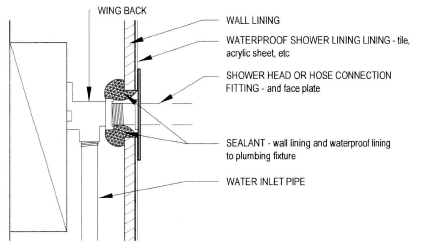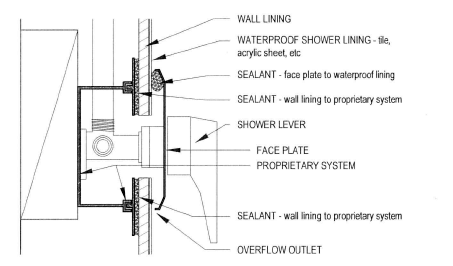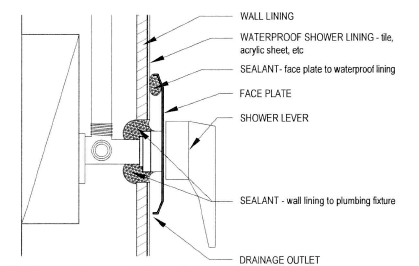Well-sealed shower penetrations prevent water damage
Penetrations in shower linings should be waterproofed with a proprietary system or sealant to prevent water damage. This guidance provides information and diagrams to show how this can be done.
This information was confirmed as current in February 2016. It originally appeared in Codewords newsletters prior to January 2014.
Repairs to walls and floors as a result of water damage from showers cost building owners and the insurance industry millions of dollars each year.
Background
Building Code Clause E3 Internal Moisture requires that water splash is prevented from getting behind linings and into concealed spaces.
A solution in E3/AS1 is to seal the joints around baths, basins, tubs and sinks so that water does not get into hidden building elements and damage them. One area requiring particular attention by designers and builders is where penetrations are made through the waterproof lining of showers.
Because showers are subject to very significant water splash, penetrations in shower linings require particularly effective waterproofing. Showers range from proprietary single piece acrylic units to on-site constructed tiled-lined showers.
The penetrations for shower taps or mixing valves, roses or flexible hoses should be waterproofed with a proprietary system, or sealant compatible with all adjacent building elements. The diagrams below show how this could be done using sealant or a proprietary flange system around the penetration. No matter what system is used, the waterproofing must allow for easy access when replacing tap washers, ceramic disks and o-rings.
Examples for waterproofing through shower walls


